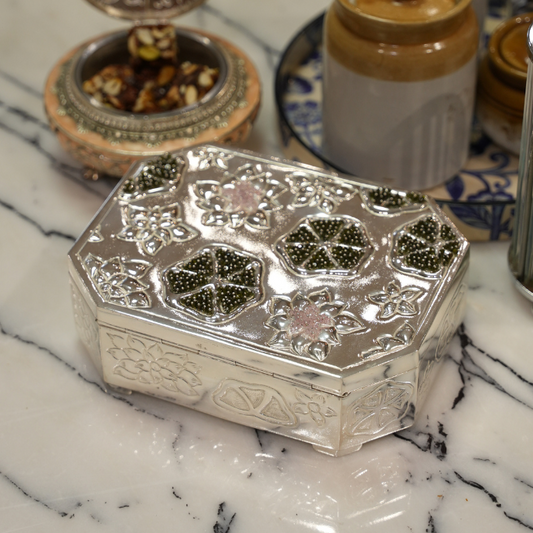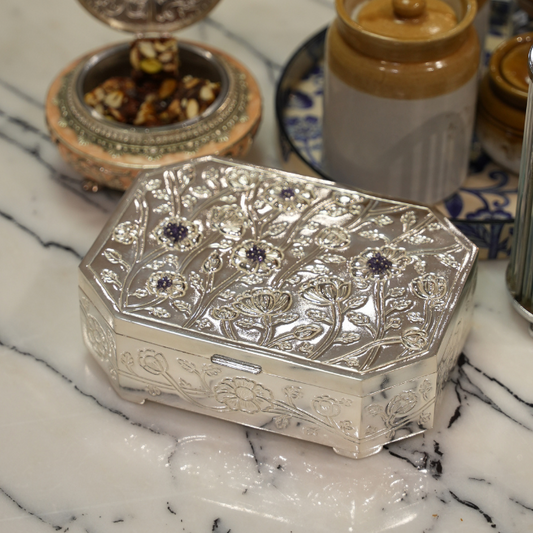Exploring the Versatile Uses of Silver: From Electronics to Medicine
Silver has always been revered for its versatility and invaluable applications. From ancient times to our modern era, its unique properties have made it essential across various fields. Let’s delve into the diverse uses of silver to appreciate its true significance.
Historical Uses of Silver
Coins and Currency
Throughout history, silver has been a cornerstone of monetary systems. Ancient civilizations minted coins from silver because of its intrinsic value and durability. These silver coins were essential for trade and commerce, symbolizing wealth and stability.
Silverware and Jewelry
Silver’s cultural impact is evident in its use for silverware and jewelry. Historically, silver utensils and ornaments were symbols of luxury and sophistication. Even today, silver remains a popular choice for fine dining and elegant adornments.
Early Medicinal Uses
Silver’s antimicrobial properties have been recognized for centuries. Ancient civilizations used silver to treat wounds and prevent infections, laying the foundation for modern medical applications.
Uses of silver in Industrial Applications
Electronics
Silver’s high electrical conductivity makes it indispensable in electronics. It’s used in electrical contacts, switches, and conductors, ensuring efficient electricity transmission. Modern gadgets and appliances rely on silver components for optimal performance.
Solar Panels
Silver is crucial in photovoltaic cells used in solar panels. It converts sunlight into electricity, contributing to renewable energy solutions. Silver’s efficiency in solar technology supports the transition to sustainable energy.
Batteries
Silver is used in various types of batteries, including silver-zinc and silver-cadmium batteries. These batteries offer higher energy density and longer life spans compared to others, making them suitable for specialized applications.
Superconductors
Silver’s potential extends to advanced technology like superconductors. These materials conduct electricity with zero resistance, and silver enhances their performance. Research in this field holds promise for future technological advancements.
Uses of silver Medical and Health
Antimicrobial Properties
Silver is extensively used in medical devices and coatings for its antimicrobial properties. It helps prevent infections by inhibiting the growth of bacteria and other pathogens, ensuring safer medical environments.
Dental Alloys
In dentistry, silver is used in dental fillings and crowns. Its durability and antimicrobial properties make it ideal for maintaining oral health and restoring damaged teeth.
Clothing and Consumer Products
Silver-infused clothing and hygiene products harness its antibacterial properties, offering enhanced protection against microbes and providing hygiene benefits in everyday life.
Everyday Uses of silver
Photography
Silver halides have been integral to photographic films and papers. Despite the rise of digital photography, silver’s role in traditional photography remains significant for its ability to capture high-quality images.
Mirrors and Reflectors
Silver’s high reflectivity makes it ideal for mirrors and specialized reflectors. It enhances the efficiency of everyday mirrors and contributes to applications in optics and lighting.
Home Appliances
Silver is used in various home appliances like washing machines and refrigerators. Its incorporation in appliance components improves efficiency and performance, offering long-lasting benefits.
Emerging Uses and Innovations
Nano-Silver
Nano-silver technology represents a cutting-edge application of silver. These tiny particles are used in medical treatments, textiles, and environmental purification. While offering numerous benefits, their potential risks are also being studied.
Environmental Impact
Recycling silver and promoting its sustainable use are crucial for minimizing environmental impact. Silver’s recyclability and role in clean energy technologies contribute to eco-friendly practices.
Market Trends
The demand for silver is influenced by its diverse applications. Current market trends indicate steady growth, with potential for increased use in emerging technologies. Economic factors and technological advancements shape the future of silver’s market.
Conclusion
Silver’s versatile applications, from historical uses to modern innovations, highlight its enduring significance. Exploring its diverse roles in various fields allows us to appreciate its value and potential. Incorporating silver into different aspects of life can lead to technological advancements, improved health outcomes, and sustainable practices.
FAQs
What are the most common uses of silver in everyday life?
Silver is commonly used in jewelry, silverware, and mirrors due to its reflective properties and aesthetic appeal. It is also found in electronics, batteries, and dental alloys.
How is silver used in the medical field?
Silver is used for its antimicrobial properties in medical devices, wound dressings, and coatings to prevent infections. It is also used in dental fillings and crowns.
Why is silver important in electronics and solar panels?
Silver is the best conductor of electricity, making it essential for electrical contacts, switches, and conductors in electronics. In solar panels, silver paste is used in photovoltaic cells to improve efficiency.
What are the environmental benefits of using silver in technology?
Silver plays a significant role in renewable energy technologies, such as solar panels, contributing to sustainable energy solutions. Its use in advanced water purification systems also helps protect the environment.
How does silver contribute to sustainable practices?
Silver’s high recyclability and its use in technologies that promote clean energy and water purification contribute to sustainable practices. Nano-silver applications are also being explored for their environmental benefits.
What historical uses of silver are still relevant today?
Silver has been historically used in coins, currency, and jewelry. These uses continue today, with silver remaining a popular choice for investment, decorative items, and cultural artifacts.
What are some emerging technologies involving silver?
Emerging technologies include the use of nano-silver in medical applications, textiles, and environmental purification. Silver is also being researched for its potential in superconductors and advanced electronics.







